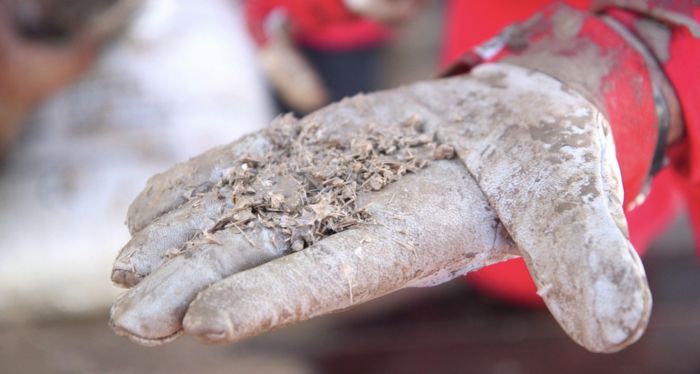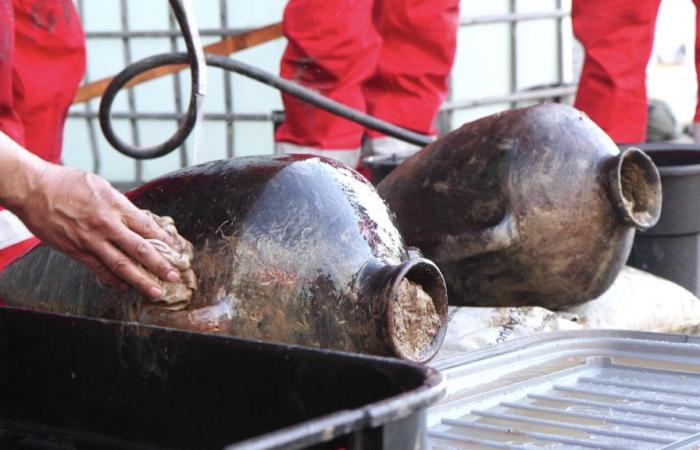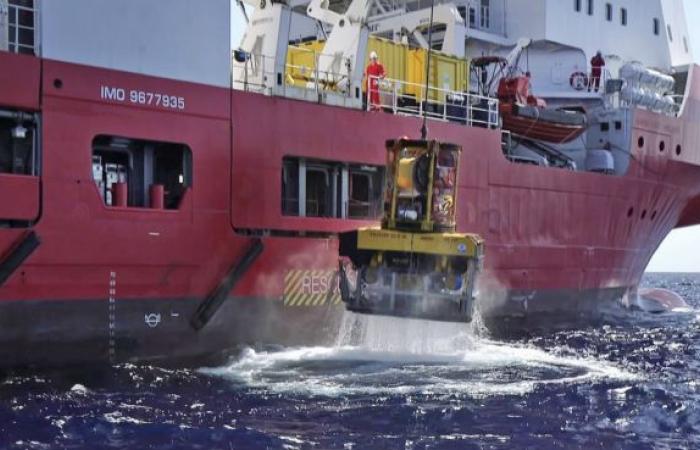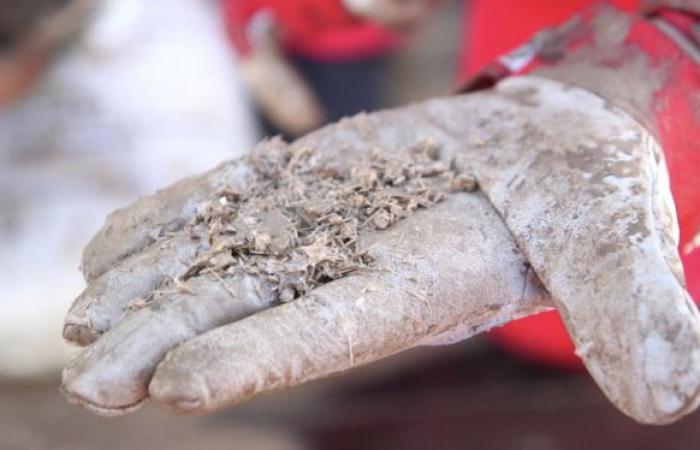About a year ago, while the company Energean was exploring the Mediterranean seabed with a view to extracting natural gas more than 90km from the Israeli coast, the images sent by the diving robot displayed an unusual spectacle: “A big pile of “amphorae piled up on the seabed,” explains Dr Karnit Bahartan, environmental manager at Energean. The images are sent to the Israel Antiquities Authority (AIA), which recounts the discovery in a press release issued on June 20.
Photo of the ship’s cargo taken by the diving robot at a depth of 1.8km ©Energean
The find is unique: it is a Canaanite merchant ship which sank more than 3000 years ago and which lies at a depth of 1.8km. 12 meters long, it carried hundreds of amphoras, the majority of which, still intact, are buried under marine sediments, and perhaps part of the wooden hull. If the seabed is littered with wrecks all over the world, this is the first to be found in deep waters.
Frozen in time
“This discovery changes what we know about history,” enthuses Jacob Sharvit, head of the AIA maritime unit, in the press release. Based on the discovery of two other late Bronze Age shipwrecks not far from the Turkish coast, the academic hypothesis until now was that at that time trade was carried out by sailing from port in port, along the coastline.
Read also >> A rare cargo of marble found off the coast of Caesarea
“We now know that sailors were able to cross the Mediterranean Sea without using the view of the coast. At this GPS point, we only see the sea. So they probably took help from the stars and the position angles of the sun. »
The amphoras were extracted using a basket specially designed for them. ©Emil Aladjem, AIA
Based on the way its cargo remained largely intact and aligned (according to the waves returned by the sonar), the ancient ship would have sunk suddenly: “Either because of a storm or because of a pirate attack, a well-known phenomenon at the end of the Bronze Age,” says Jacob Sharvit. Protected from waves and currents due to its depth, the ship is frozen in time and offers “enormous research potential”, enthuses Jacob Sharvit.
Pirates and sea peoples
A special operation was organized by the Energean team with IAI archaeologists to extract and reassemble two amphorae from the wreck using a special machine, designed to avoid damaging the structure of the ancient ship. Typical of the Canaanite period, these jars were the most efficient way to transport oil, wine, and fruit from one place to another.
Read also >> Our ancestors the Canaanites or the ancestry of the Lebanese
“Finding such a large quantity aboard a single ship speaks to the important trade links between their homeland and the ancient lands of the Near East,” explains Jacob Sharvit. Excavated, the jars contained only sediment.

Organic material recovered in the jars. The content will be searched. ©Emil Aladjem, AIA
At the end of the Bronze Age, more than 3,200 years ago, international trade expanded considerably in the region. Trade networks were established, ships improved and could transport larger volumes of goods.
Read also >> Meeting, the “Mediterranean, border of peace”
“Port cities like Byblos, Canaanite, or other Phoenician cities, saw their status rise,” explains the archaeologist. We have documents from this period of maritime military expeditions, such as the text on the walls of Thutmose III’s palace at Karnak describing his fifth campaign in Syria and the Land of Israel. During this campaign, many Canaanite ships laden with goods were captured. »
Maritime trade flourished until the second half of the Late Bronze Age. During this period, a new actor appeared in the Eastern Mediterranean, “the Sea Peoples”, pirates who disrupted trade between Egypt and the Levantine coast.








